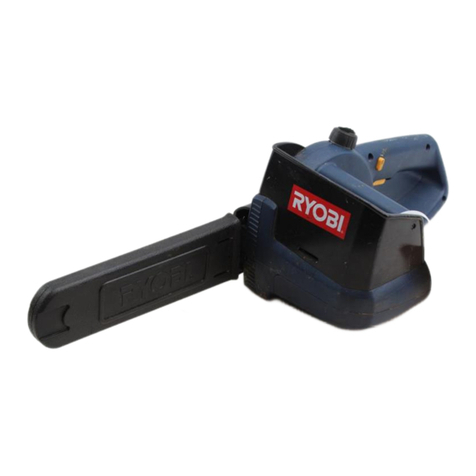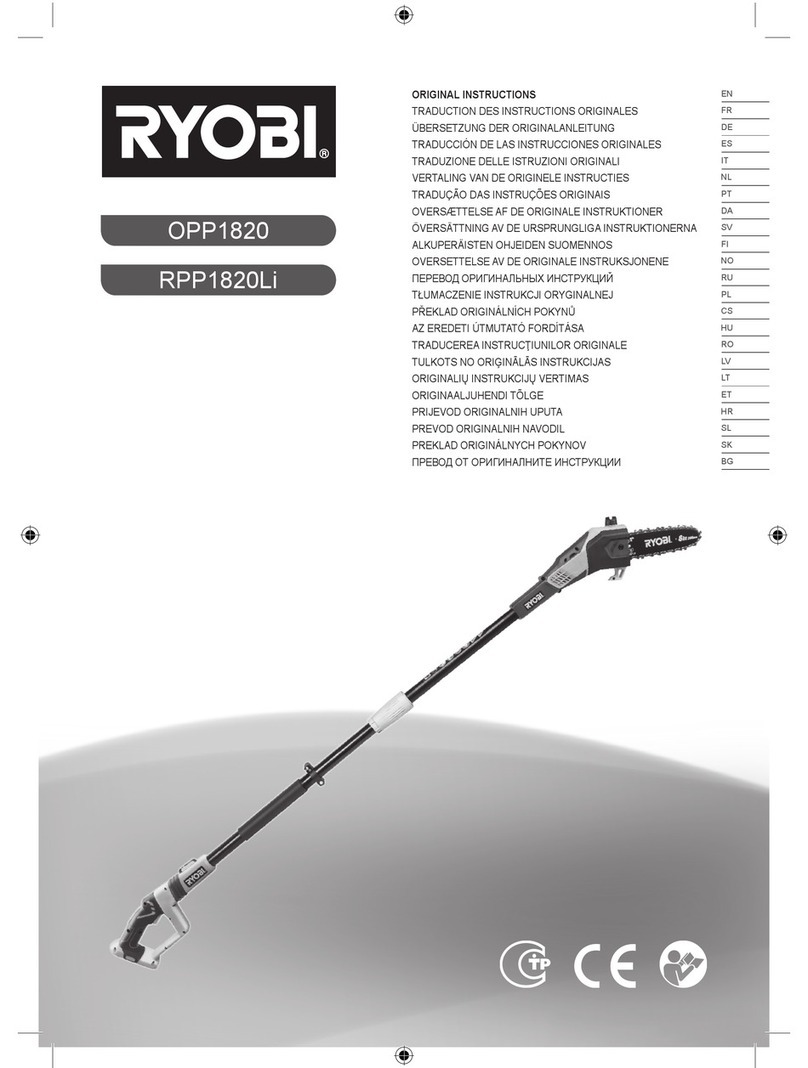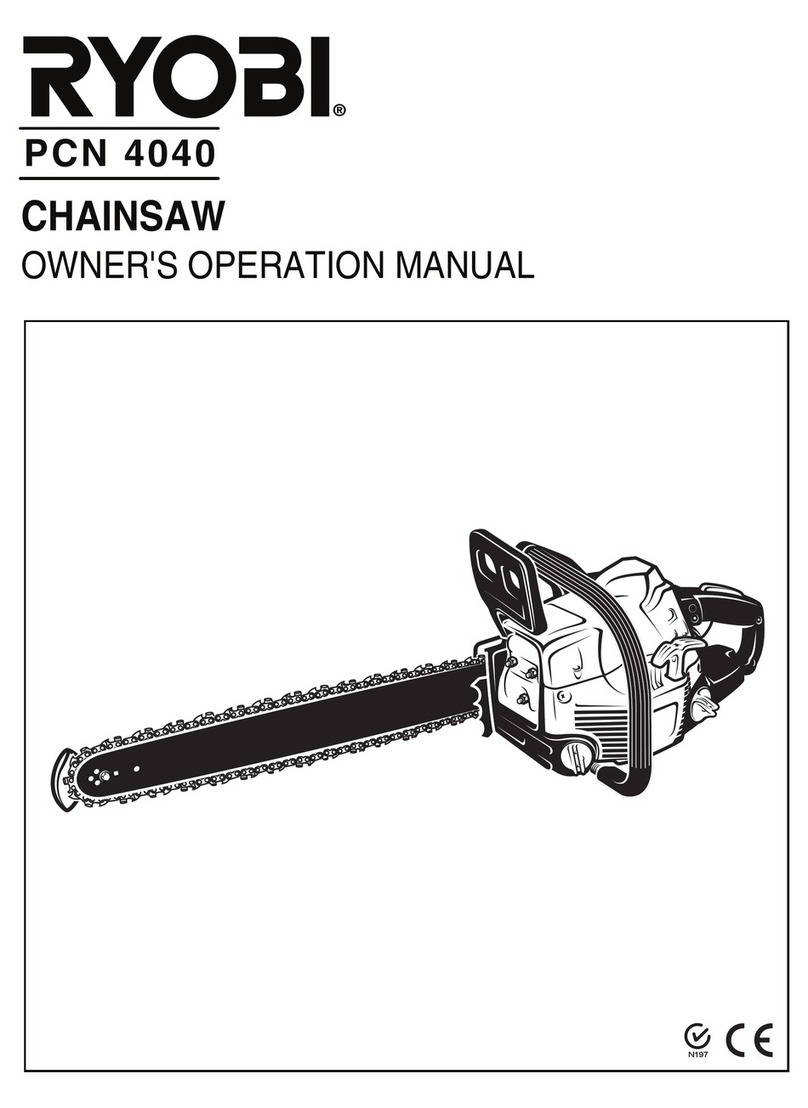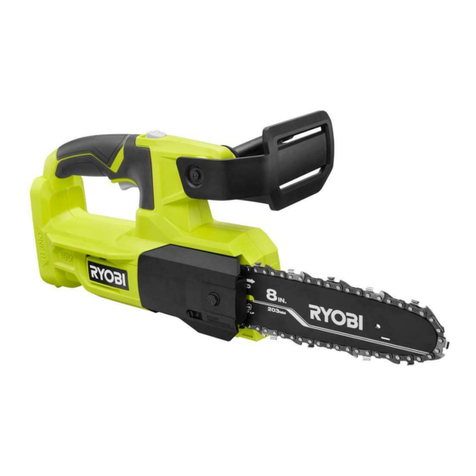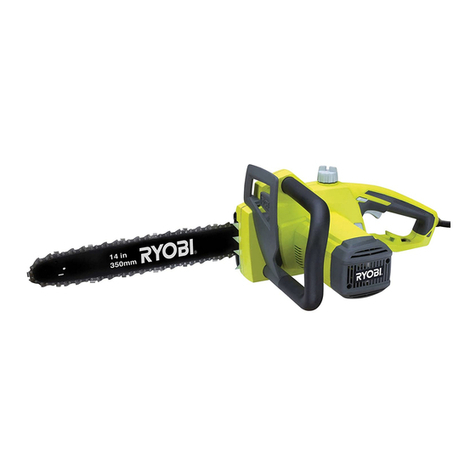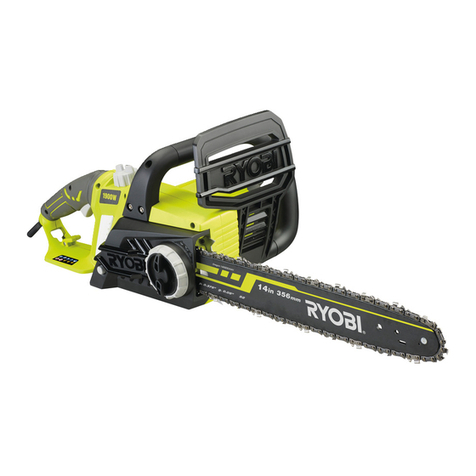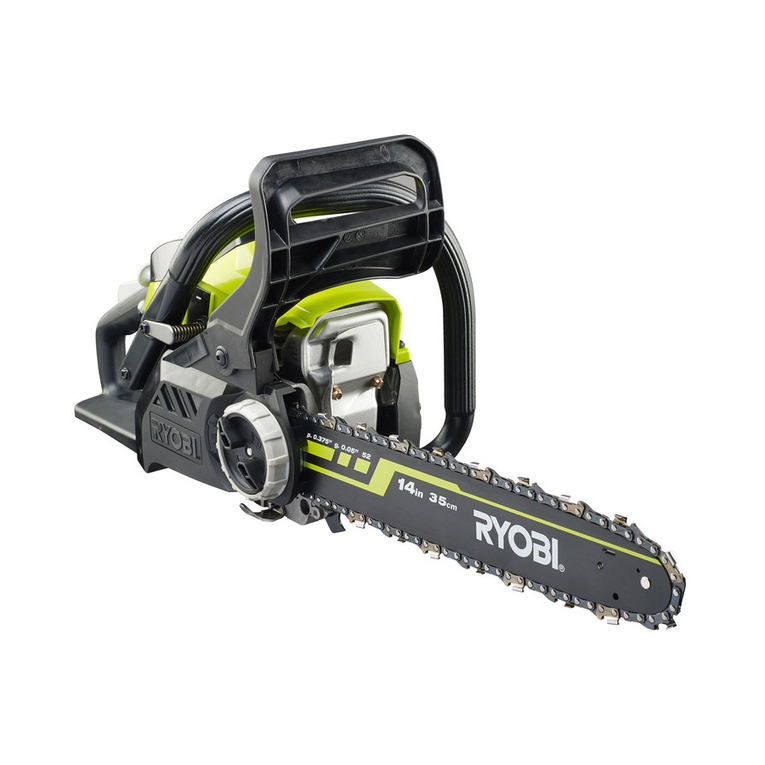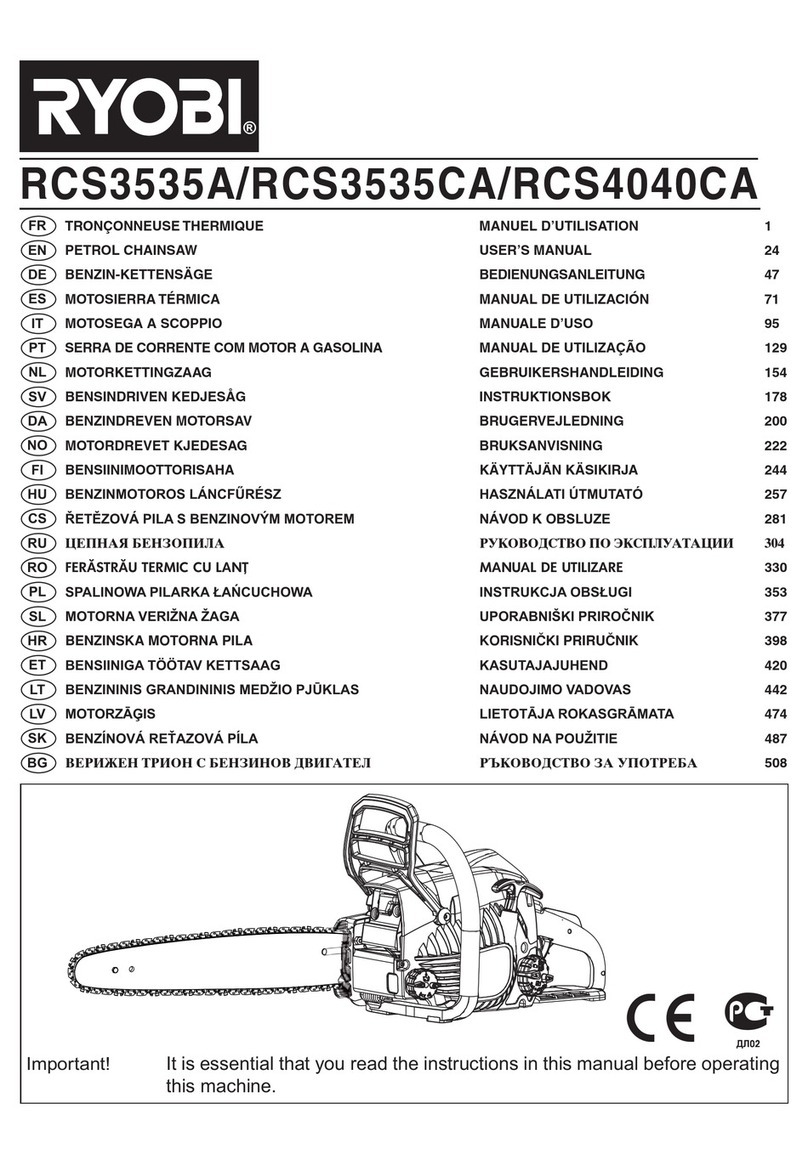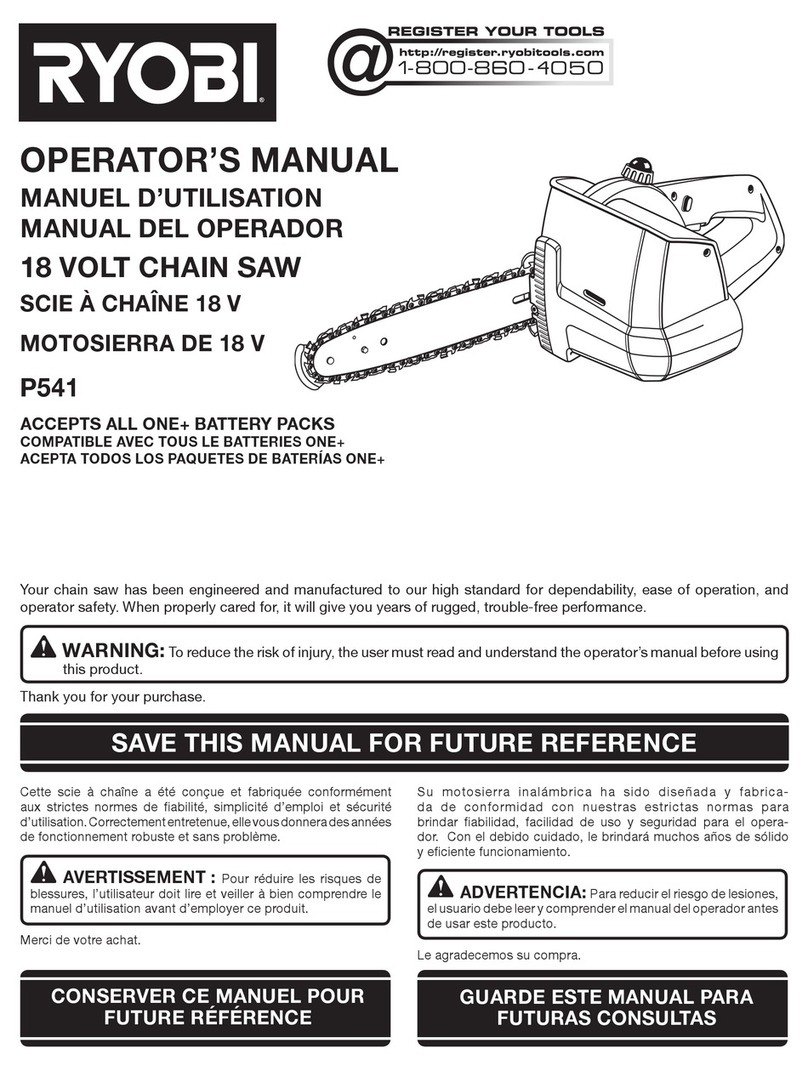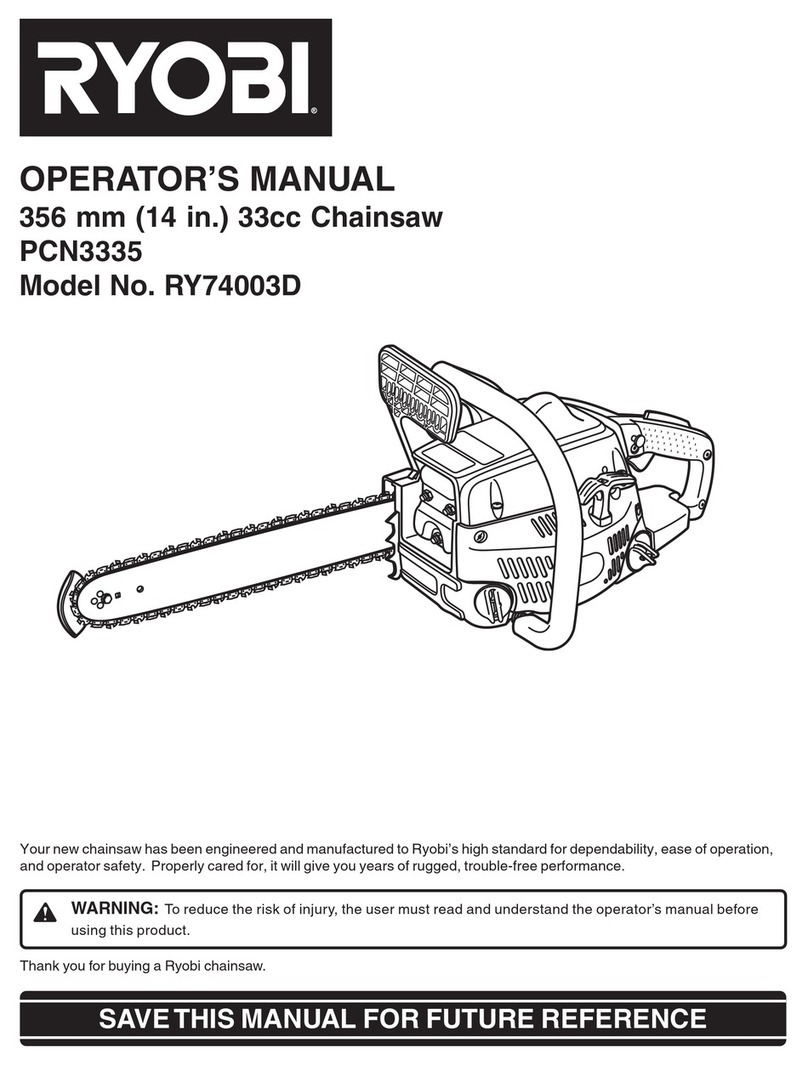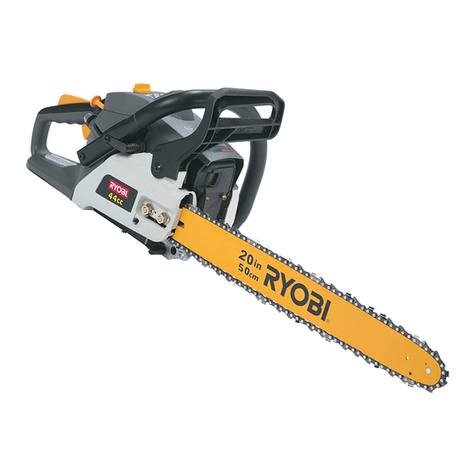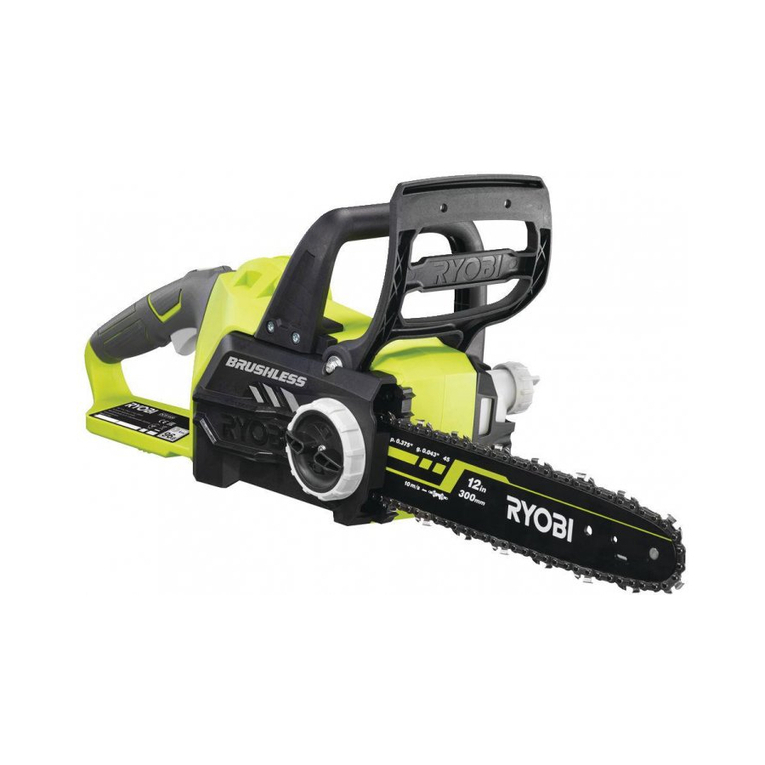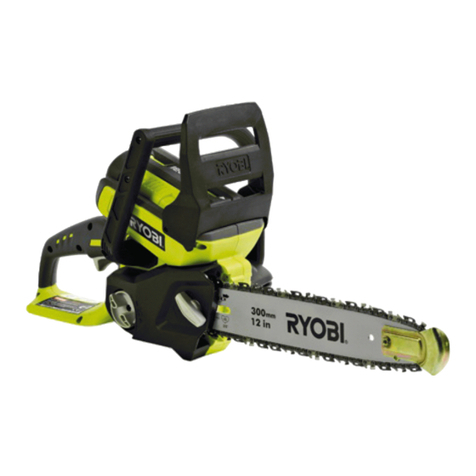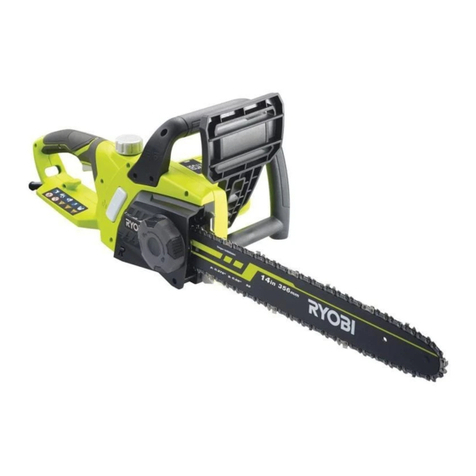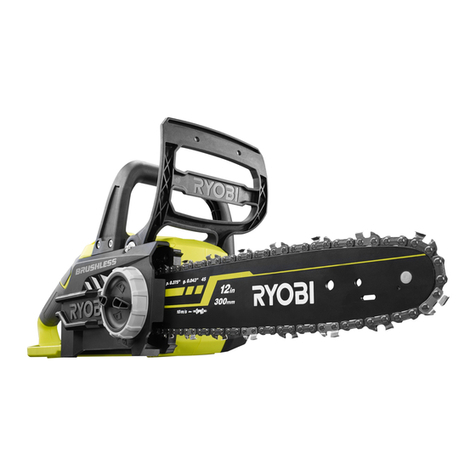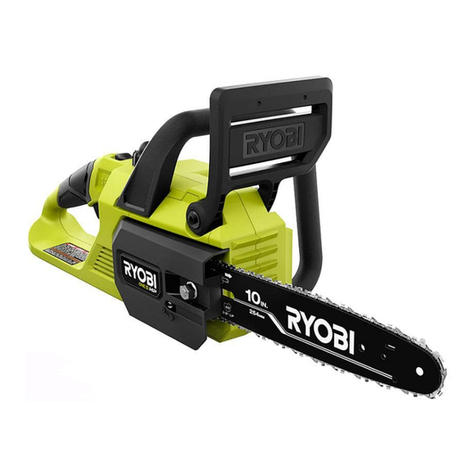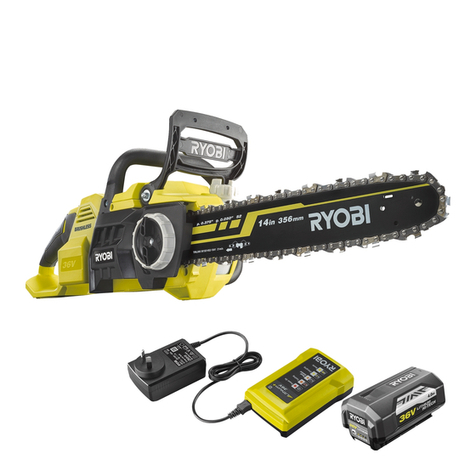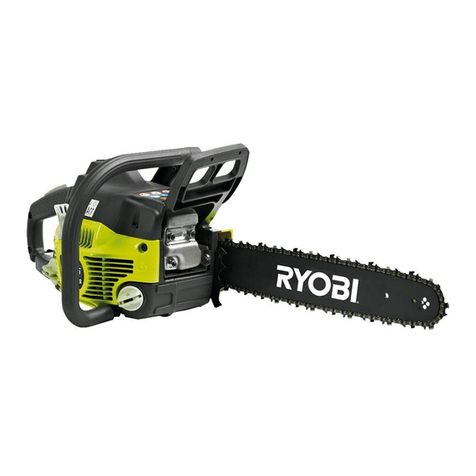
3
damage or stress.
ŶNever pick up or carry the product by the electric cable.
ŶNever pull the power cord to disconnect from the power
supply.
ŶKeep the power cord away from heat, oil, and sharp
edges.
ŶBefore every use, examine the supply cord for damage.
If there are signs of damage, it must be replaced by
a qualified person at an authorised service centre to
avoid a hazard.
CHAINSAW SAFETY WARNINGS
ŶKeep all parts of the body away from the saw
chain when operating the product. Before you
start the chainsaw, make sure the saw chain is not
contacting anything. A moment of inattention while
operating chainsaws may cause entanglement of your
clothing or body with the saw chain.
ŶAlways hold the chainsaw with your right hand
on the rear handle and your left hand on the front
handle. Holding the chainsaw with a reversed hand
configuration increases the risk of personal injury and
should never be done.
ŶHold the power tool by the insulated gripping
surface only, because the saw chain may contact
hidden wiring or its own cord. Saw chains contacting
a “live” wire may make exposed metal parts of the
power tool “live” and could give the operator an electric
shock.
ŶWear safety glasses and hearing protection. Further
protective equipment for head, hands, legs and feet
is recommended. Adequate protective clothing will
reduce personal injury by flying debris or accidental
contact with the saw chain.
ŶDo not operate a chainsaw in a tree. Operation of
a chainsaw while up in a tree may result in personal
injury.
ŶAlways keep proper footing and operate the
chainsaw only when standing on fixed, secure and
level surface. Slippery or unstable surfaces such as
ladders may cause a loss of balance or control of the
chainsaw.
ŶWhen cutting a limb that is under tension be alert
for spring back. When the tension in the wood fibres is
released the spring loaded limb may strike the operator
and/or throw the chainsaw out of control.
ŶUse extreme caution when cutting brush and
saplings. The slender material may catch the saw
chain and be whipped toward you or pull you off
balance.
ŶCarry the chainsaw by the front handle with the
chainsaw switched off and away from your body.
When transporting or storing the chainsaw always
fit the guide bar cover. 3URSHU KDQGOLQJ RI WKH
chainsaw will reduce the likelihood of accidental contact
with the moving saw chain.
ŶFollow instructions for lubricating, chain tensioning
and changing accessories. Improperly tensioned
or lubricated chain may either break or increase the
chance for kickback.
ŶKeep handles dry, clean, and free from oil and
grease. Greasy, oily handles are slippery causing loss
of control.
ŶCut wood only. Do not use chainsaw for purposes
not intended. For example: do not use chainsaw
for cutting plastic, masonry or non-wood building
materials. Use of the chainsaw for operations different
than intended could result in a hazardous situation.
Causes and operator prevention of kickback:
Kickback may occur when the nose or tip of the guide bar
touches an object, or when the wood closes in and pinches
the saw chain in the cut.
Tip contact in some cases may cause a sudden reverse
reaction, kicking the guide bar up and back towards the
operator.
3LQFKLQJWKHVDZFKDLQDORQJWKHWRSRIWKHJXLGHEDUPD\
push the guide bar rapidly back towards the operator.
Either of these reactions may cause you to lose control of
the saw which could result in serious personal injury. Do
not rely exclusively upon the safety devices built into your
saw. As a chainsaw user, you should take several steps to
keep your cutting jobs free from accident or injury.
Kickback is the result of tool misuse and/or incorrect
operating procedures or conditions and can be avoided by
taking proper precautions as given below:
ŶMaintain a firm grip, with thumbs and fingers
encircling the chainsaw handles, with both hands
on the saw and position your body and arm to allow
you to resist kickback forces. Kickback forces can
be controlled by the operator, if proper precautions are
taken. Do not let go of the chainsaw.
ŶDo not overreach and do not cut above shoulder
height. This helps prevent unintended tip contact and
enables better control of the chainsaw in unexpected
situations.
ŶOnly use replacement bars and chains specified
by the manufacturer. Incorrect replacement bars and
chains may cause chain breakage and/or kickback.
ŶFollow the manufacturer’s sharpening and
maintenance instructions for the saw chain.
Decreasing the depth gauge height can lead to
increased kickback.
ADDITIONAL CHAINSAW SAFETY WARNINGS
ŶIt is recommended to cut logs on a saw-horse or cradle
when operating the product the first time.
ŶEnsure all guards, handles and spiked bumper are
properly fitted and are in good condition.
Ŷ3HUVRQV XVLQJ WKH SURGXFW VKRXOG EH LQ JRRG KHDOWK
The product is heavy, so the operator must be
physically fit. The operator should be alert, have a good
vision, mobility, balance, and manual dexterity. If there
is any doubt, do not operate the product.
ŶDo not start using the product until you have a clear
work area, secure footing, and a planned retreat path
away from the falling tree.
ŶBeware of the emission of lubricant mist and saw dust.
Wear a mask or respirator, if required.

